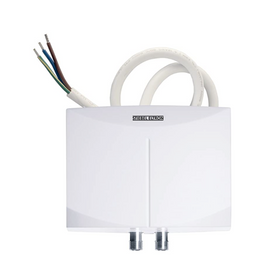
Droughts and Household Flooding
Last Updated: Apr 13, 2025The driest season of the year is when plumbers often report an increase in home flooding occurrences. Although it sounds impossible, it's true. Sewer lines are susceptible to back-ups in periods of drought, often resulting in localized household floods, which cost homeowners thousands of dollars in cleanup and repairs. From Roto-Rooter, Paul Abrams has provided insights and tips on the surprising instances of home flooding during drought periods.
Table of Contents
- What Causes Home Flooding During Droughts?
- Which Types of Pipes are Most Susceptible to Root Damage?
- Tips to Avoid Household Flooding during Droughts

What Causes Home Flooding During Droughts?
Most sewer lines back up because tree roots amass inside the pipeline, preventing drainage. Tree roots are most active during seasonal droughts as a matter of survival. When trees get thirsty, they send out tiny feeder roots in search of moisture and nutrients.

Underground root growth generally extends outward from the tree to a distance of two or three times the tree's height. However, root growth can extend as far as seven times the tree's height during a prolonged drought. Large, mature trees have thousands of feet of root system searching in all directions for moisture. Unfortunately for homeowners, the roots follow underground water vapor trails along the path of least resistance, usually leading them into the sewer pipes beneath our front yards.
Tree roots are remarkably adept at working their way into poorly sealed pipe joints. Once inside, they'll fill the pipe with multiple hair-like root masses at each entry point. The root masses act like nets and soon catch toilet tissue, grease, and waste flowing from the toilet and sink drains, resulting in reduced flow and slow drains. A complete blockage will eventually occur if the roots aren't removed or impeded. Once a complete blockage occurs, households can experience water and sewage damage from overflowing toilets, sinks, and especially from appliances like washing machines and dishwashers. The water must go somewhere, and if it can't go down the drain, it'll flow out of the appliance or plumbing fixture and onto the floor.
If left unchecked, roots inside pipes continue to grow and expand, putting pressure on cracks or pipe joints. This slow, deliberate force will further damage the pipe. It may result in a total collapse, requiring repair or replacement of the sewer line. Unfortunately, homeowners are usually responsible for the cost of repairing a broken sewer pipe beneath their yards. Cities and municipalities are only responsible for the sewer mains beneath streets, which residential sewers flow into.
Tips to Avoid Household Flooding during Droughts
- Pay attention to slow household drains. If two or more drains are slow, the problem is probably in the main sewer.
- If you have slow drains, maintain a watchful eye when the washing machine is operating to minimize the risk of localized flooding caused by backups.
- Treat slow drains with a plunger and over-the-counter or DIY clog-clearing products. If drainage doesn't show significant improvement, you probably have a main sewer clog.
- Hire a sewer & drain cleaning company to clean your sewer line mechanically.
Rise
At Rise, we strive to make sustainable home improvement easy and accessible for everyone. Whether you're building or renovating, our thoroughly vetted building products will help you reduce your carbon footprint, lower energy costs, and create a more sustainable living or working environment.














